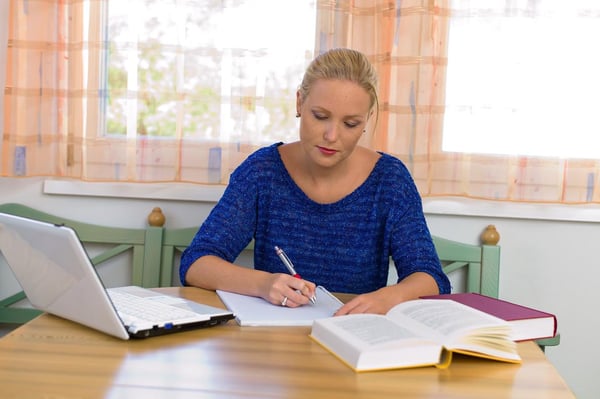Published on
Flipping the Classroom

The field of education is always trying to achieve better ways to deliver learning content that will lead students to reach optimal outcomes. As educators, it’s important for us to educate these students so they meet and hopefully exceed learning outcomes, in order to prepare them to be productive and contributing members of society. However, one of the problems we face as educators is the continued use of a model of teaching that is centuries old: a teacher-centered classroom.
The “traditional” style of teaching focuses on the teacher delivering knowledge to the students mostly through lecture, and then sending students home to decipher the knowledge through homework and papers. The students take an exam to demonstrate this knowledge, and then the class moves onto the next subject. Now that technology has become more prevalent in our daily and professional lives, it’s time to change the traditional paradigm. We need to shift the focus toward the application of knowledge by creating a more active, hands-on classroom. I have found through my own personal experience that one of the ways to create this paradigm shift is by understanding what flipped teaching is and how powerful of an educational delivery system it truly is. Flipping the classroom isn’t a brand new idea, but it’s become more popular because of the influx of technology, not only into education but also into our everyday lives. New technologies including tablets, smart phones, laptops and access to 3G and 4G networks, among other things, have allowed us to have constant and reliable access to information at all times. As educators, why not take advantage of this?
There are two major components to a flipped lesson that are of equal importance: lecture media and in-class assessment activities. The lecture media essentially replaces the homework and the classroom is used more for hands on activity, as opposed to lecturing. Flipping essentially transforms the classroom into a learning lab—an environment set up for students to get hands-on experience by actively applying knowledge, rather than just listening to it through lecture. The in-class assessments also allow students to work in groups to solve problems and work through ideas. Another important change is the role of the educator. During classroom activities the instructor is able to work directly with the students and provide instant feedback to enhance understanding.
Effectively flipping the classroom starts with effective lecture material to prepare students in-class activities; think of it as priming the pump. This is the part of flipped teaching that has gotten the most attention: using video or audio lectures for the students to watch/listen to at home as homework. Once you create these lecture mediums, they need to be uploaded to sites that can be easily accessed by students. For me personally, YouTube and Sophia.org have been easy sites to work with, both for my students and for myself.
One concern that teachers have with flipping the classroom is with tracking student activity to ensure they’re actually watching/listening to the video lectures. If you don’t have the proper software to do this, you can follow the lecture with an activity or assignment that can only be completed from the information viewed in the video to confirm that the student has viewed the lecture. There are companies out there though, such as 323link, that provide services to enable teachers to track what lectures the students have watched.
My personal experience with flipped teaching has been a positive one thus far, but there was some trial and error in the beginning. It takes a little time and experimentation to figure out how to manage your time in the classroom, how to create your lecture media, and how to adapt your lesson planning in general.
I recommend using backwards design when it comes to lesson planning. This goes: objectives, assessment, lecture. Get your objectives/outcomes down and organized, then tie those into your classroom assessment activity, and finally create your lecture media that will deliver the knowledge required to perform the flipped lesson. This form of lesson planning has worked well for me—so well I managed to increase my student retention by 20 percent a year since switching to the flipped classroom approach.
When done correctly, flipped teaching is a powerful form of teaching for two major reasons: firstly, the students have constant access to lecture media created by educators, and secondly, the classroom is transformed into a more hands-on application type of environment. Through flipped teaching, educators can get through to individual and group learners simultaneously, with more room for differentiated teaching. They can also push students more out of their comfort zones—for the right reasons—to create a dynamic learning environment. The important thing now is to educate more educators about this concept and to actually put it into practice for the best interest of the students.
Are you willing to change education through innovation, or are you going to stick with an old model that is becoming outdated? The choice is yours.
Author Perspective: Educator



